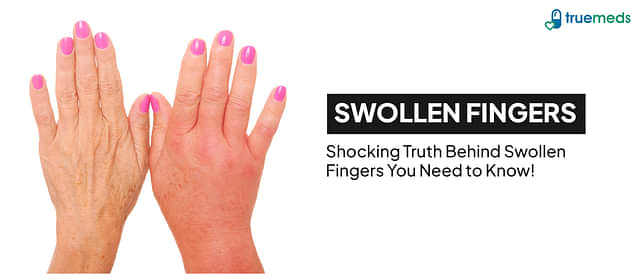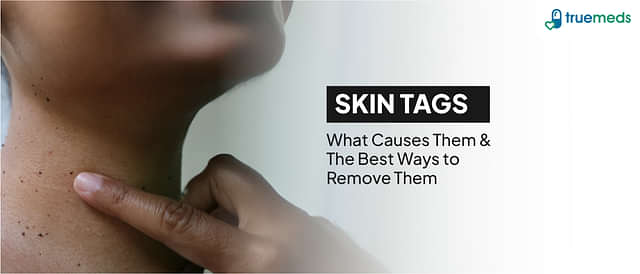Different Types of Fungal Infection (Mycosis)
Last updated on : 24 Apr, 2025
Read time : 10 min
What are Fungi?
Fungi are microorganisms that are classified distinctly from plants or animals. Growth is their mode of mobility. Another medium of spreading is through air and water in the form of spores. Some fungal species coexist naturally in our body (mouth, GI tract, skin), but they have the potential to overgrow under certain circumstances.
Fungi are microorganisms with a typical substance in their cell walls called chitin. Fungi have a biodiversity comprising an estimated 2.2 million to 3.8 million species. Out of which, approximately 148,000 have been described, with over 8,000 species known to be harmful to plants and not less than 300 that can cause human infection infections in humans.
Fungi, like many microorganisms, can be beneficial or detrimental. When hazardous fungi penetrate the body, they might be difficult to eliminate since they can stay in the environment and re-infect the individual attempting to recuperate.
Some fungi, such as wide varieties of mushrooms, are edible. Aspergillus is one of several fungus species that can be exceedingly harmful and cause fatal infections.
What is Fungal Infection?
A fungal infection can afflict anyone, and it has the potential to develop in many parts of the body, such as in your mouth, throat, skin, nails, lungs, and urinary tract. In different parts of the body, it manifests differently. Fungal infections occur when a strain of fungal microbe overgrows in one part of the body so that the immune system cannot overthrow it. These infections, such as scalp fungal infections, can be challenging to treat without proper medical attention.
A fungal infection of the skin can appear red, swollen, or bumpy or look like a rash under your skin. The nails may look discoloured, thick, or cracked. When infected with a fungus, the mouth or throat may have a white coating or patches.
Examples – A jock with athlete’s foot, a baby with thrush, and vaginal yeast infection in women and ringworm.
Fungal infections can be contagious. They can transmit from person to person. Sometimes, a person acquires fungal infection from infected animals or contaminated soil or surfaces.
This article will review the causes and risk factors of getting a fungal infection and the symptoms and treatment options for some common types.
Types of Fungal Infections
The three different types of fungal infections are as mentioned below.
Superficial fungal Infections
Superficial fungal infections grow in dark and moist areas like the mouth, throat, or vagina. It also affects nails and skin. These infections are easily manageable in those who have good immunity.
Some examples of a superficial fungal infection are
- Ringworm (dermatophytosis)
Dermatophytes can invade and break down keratin present in the outermost layer of the skin, hair, and nails. The terminology of dermatophyte infections begins with the term “tinea,” which in Latin means “worm.” Examples of Dermatophytes –
| Infected body part | Latin name |
| Foot | Tinea pedis |
| Scalp | Tinea capitis |
| Hands | Tinea manum |
| Inner thighs | Tinea cruris |
- Onychomycosis
Onychomycosis is a typical nail disorder responsible for about 50% of nail infections. The incidence of onychomycosis varies from 0.5-12% in India and about 5% globally. Onychomycosis is usually found in males with a suppressed immune system, diabetic, infected with human immunodeficiency virus (HIV), or who have poor circulation. Another predisposing factor for onychomycosis is trauma or nail dystrophy.
- Candidiasis
Candida albicans is a microorganism commonly found as part of the mouth, gastrointestinal tract, and vagina flora. However, it can become a disease-causing agent, especially in the vaginal tract and axilla of the arm, the groin region, inframammary folds, and areas in between fingers. Risk factors for superficial candidiasis are infancy, pregnancy, ageing, immunodeficiency, diabetes, and obesity. Examples of candidiasis are oral thrush, diaper rash, vaginal yeast infections, oesophagal candidiasis, and candidal intertrigo.
- Tinea versicolor/pityriasis versicolor
It is a typical fungal infection caused by Malassezia, yeast. Frequent infections are seen in young adults but can occur at any age. It is predominant in the hot months and tropical areas. Discolouration of the skin (looks like a lesion) occurs in the infection caused by the fungus Malassezia.
Subcutaneous fungal infections
Fungal infection occurs beneath the skin. Saprophytic fungus (one that lives on dead bodies) found in the soil causes subcutaneous fungal infection. The fungal spores enter the host body through a wound into the lymph vessels. Common symptoms are rashes and ulcers on your skin.
Subcutaneous fungal infection cases are typically found in tropical and subtropical areas.
Some examples are:
| Type of fungal infection | Causative agent (Fungus) | Important symptoms |
| Sporotrichosis – “Rose Gardener’s Disease,” | Sporothrix | Small painless bump that appears 1-12 weeks after exposure to the fungus. The bump will grow in size and look like an ulcer. |
| Chromoblastomycosis | Fonsecaea pedrosoi, Phialophora verrucosa, Cladophialophora carrionii | Warty cutaneous nodes which look like flout of cauliflower, scarring, affects subcutaneous tissues of feet |
| Eumycetoma | Madurella mycetomatis | It usually spreads to involve the skin, deep structures, and sometimes bone.Resulting in deformity and loss of function. |
Deep fungal infections
Deep fungal infections occur in places in the body other than the skin, like the lungs, blood, urinary tract or brain. Some deep fungal infections are opportunistic, which usually affect people with low immunity.
Deep fungal infections are
- Histoplasmosis: Histoplasma capsulatum, the fungus that causes histoplasmosis. Exposure to fungi infects multiple organs, such as the lungs, brain, or other body parts. Skin lesions may develop.
- Coccidioidomycosis (Valley fever) is caused by the fungus Coccidioides immitis and Coccidioides posadasii; it infects the lungs, leading to chest infection with fever, cough, and chest pain. It can cause persistent pneumonia and meningitis in immunosuppressed persons. Skin lesions do not occur.
- Blastomycosis: Blastomyces dermatitidis, the fungus that causes blastomycosis, commonly infects the lungs manifesting low-grade fever, chest pain, and cough. It also affects your bones and skin. Skin lesions are typically seen. It can also affect your brain and spinal cord in exceptional cases.
- Aspergillosis: Aspergillus is a mould that is found indoors and outdoors. Aspergillus causes aspergillosis. It can infect other body parts or form a fungus ball (aspergilloma). A person with a compromised immune system acquires several types of lung infections, including allergic bronchopulmonary aspergillosis (ABPA) and chronic pulmonary aspergillosis.
- Candidal urinary tract infection: Candida sp causes urinary tract infections (UTIs).
- Invasive candidiasis: Candida species cause invasive candidiasis that infects your heart, blood (candidemia), brain, eyes (endophthalmitis), bones, or other body parts.
- Pneumocystis pneumonia (PJP): The fungus Pneumocystis jirovecii affects the lungs and causes Pneumocystis jirovecii pneumonia (PJP).
- Mucormycosis: Patients with diabetes and kidney problems can develop mucormycosis due to a group of moulds known as micromycetes. Mucormycetes affect the sinuses and brain, lungs, intestines, skin or many parts of your body at the same time.
- Cryptococcosis: Encapsulated yeast C. neoformans cause cryptococcosis. They usually infect your lungs after inhaling the spores, but sometimes can infect your brain leading to meningitis.
Fungal Infection Causes
Yeast, moulds, and other types of fungus are present in the environment. Some species of fungi cause fungal infections. Most people breathe in spores without falling ill. But some people do get infected due to weak immune systems. Several fungal species enter the host body through cuts or wounds. Some of these fungi are present in the soil, thus affecting the lower extremities (feet and legs) of the body.
Some typical fungi that can be infectious include:
- Dermatophytes: Dermatophytes are a set of fungi found on skin, hair, and nail.
- Candida: Candida albicans is a yeast that thrives on your body without creating any complications.
- Environmental fungi: Live in soil or water.
However, yeasts and moulds cause infections. The most frequently found dermatophytes that cause nail fungal infections are
- Trichophyton rubrum
- Trichophyton interdigitale
- Epidermophyton floccosum
- Trichophyton violaceum
- Microsporum gypseum
- Trichophyton tonsurans
- Trichophyton soudanense
Risk Factors for Fungal Infection
Risk factors for different types of fungal infections include
- History of fungal infection -If a person had any previous fungal infection.
- Heavy sweating
- Humid or moist work environment
- Wearing socks and shoes with poor ventilation
- Walking in damp public places, such as swimming pools, gyms, and shower rooms without footwear.
- Any past injury or infection to the skin or nail
- People with a weak immune system, diabetes, AIDS, and circulation problems.
- Tight footwear with crowding of toes
- Older people are at greater risk of acquiring infection.
- Males are more likely to get fungal infections.
Treatment of Different Types of Fungal Infections
Different types of fungal infections are treated with antifungal medicines, which eliminate fungus in and on your body. Your healthcare provider will prescribe medication based on the area of the infection and the type of fungus involved.
A fungal disease treatment may include the following antifungal agents by your healthcare
- Oral medication (pills).
- IV medication is given to you directly into a vein at a doctor’s office or hospital.
- Lotion, cream, or powder.
- Mouthwash or lozenges.
- Eye drops.
- Shampoo.
Here are some antifungal medicines and fungal infections treatment.
| Superficial Fungal Infection | Medication | Griseofulvin, ketoconazole, and itraconazole |
| Topical treatments | Nystatin, selenium sulfide, tolnaftate, haloprogin, miconazole, clotrimazole, and sodium thiosulfate | |
| Subcutaneous fungal infection | Medication | Itraconazole, terbinafine, Potassium iodide orally or topically, AmphotericinB |
| Surgical procedure | Surgical excision for small lesion for greater response to the medication. | |
| Deep fungal infection | Medication | Voriconazole, Isavuconazole Polyenes Amphotericin Amphotericin B Cochleate Caspofungin Micafungin Flucytosine Allylamines Terbinafine, Itraconazole Micafungin Anidulafungin Rezafungin Antimetabolites 5 Flucytosine Triterpenoid Itraconazole Ibrexafungerp Fluconazole Voroconazole Posaconazole Isavuconazole Oteseconazole Ibrexafungerp Orotomide Olorofim Fosmanogepix Manogepix Gepinacin |
Conclusion
Any fungal infection can cause discomfort and are hurtful. Some people may take weeks or months to get rid of the infection. Visit a doctor if you suspect of fungal infection. A medical practitioner recommends suitable antifungal medication or changes in your diet or routine activities to help prevent subsequent fungal infections. Diabetic patients are vulnerable to fungal infections and should contact their doctor.
Some of the drugs covered in this article can be purchased. One can avail of free doctor consultations if one uploads previous medication prescriptions on the Truemeds app or website. Truemeds is an online pharmacy that provides the highest-quality medications at the lowest prices. Online pharmacy, Truemeds, provides all varieties of drugs, including branded, over-the-counter, and nutritional supplements and generic medicines online at an affordable price. Free home delivery saves up to 72% on your medication purchased from Truemeds.
Frequently Asked Questions
Antifungal medicines can eliminate fungal infections, also called antimycotic agents, that stop fungi growth.
Fungal infections need medical attention as soon as possible. If left untreated, the infection may return, and spread may worsen the condition.
Fungal infections are very prevalent, and most people may get one at some point.
A person with a compromised immune system has a greater chance of getting a fungal infection when exposed to a fungus. Fungal infections are caused by the overgrowth of fungus that usually lives on our skin.
Almost everyone will acquire fungal infections at some point in their lives.
Over-the-counter antifungal creams are available.
More potent medicines that may work faster are prescribed.
If the fungal infection is severe, oral medicines are prescribed.
Disclaimer: This content, including advice and medications, provides generic information only. It is in no way a substitute for a qualified medical opinion. Always consult a specialist or your doctor for more details.
Reference
Disclaimer
Our healthcare experts have carefully reviewed and compiled the information presented here to ensure accuracy and trustworthiness. It is important to note that this information serves as a general overview of the topic and is for informational purposes only. It is not intended to diagnose, prevent, or cure any health problem. This page does not establish a doctor-patient relationship, nor does it replace the advice or consultation of a registered medical practitioner. We recommend seeking guidance from your registered medical practitioner for any questions or concerns regarding your medical condition.
Popular Articles
Recent Articles
Top-Selling Medicines:
...View more
Top-Selling OTC:
...View more
Company
About UsHealth ArticleHealth StoriesDiseases & Health ConditionsAyurvedaAll MedicinesAll BrandsNeed HelpFAQSubscribe
Registered Office Address
Grievance Officer
Download Truemeds

Contact Us
Our customer representative team is available 7 days a week from 9 am - 9 pm.
v3.7.31
2025 - Truemeds | All rights reserved. Our content is for informational purposes only. See additional information.
Our Payment Partners









































